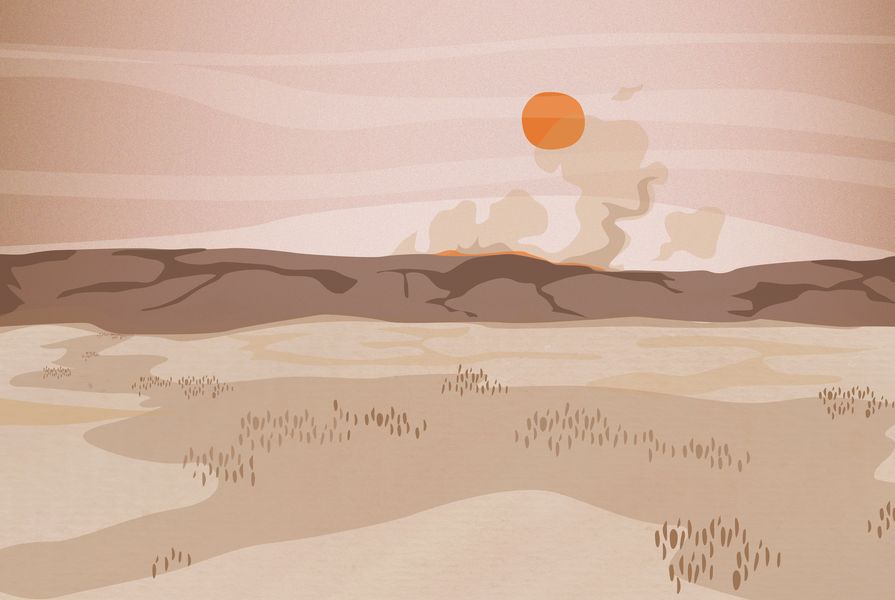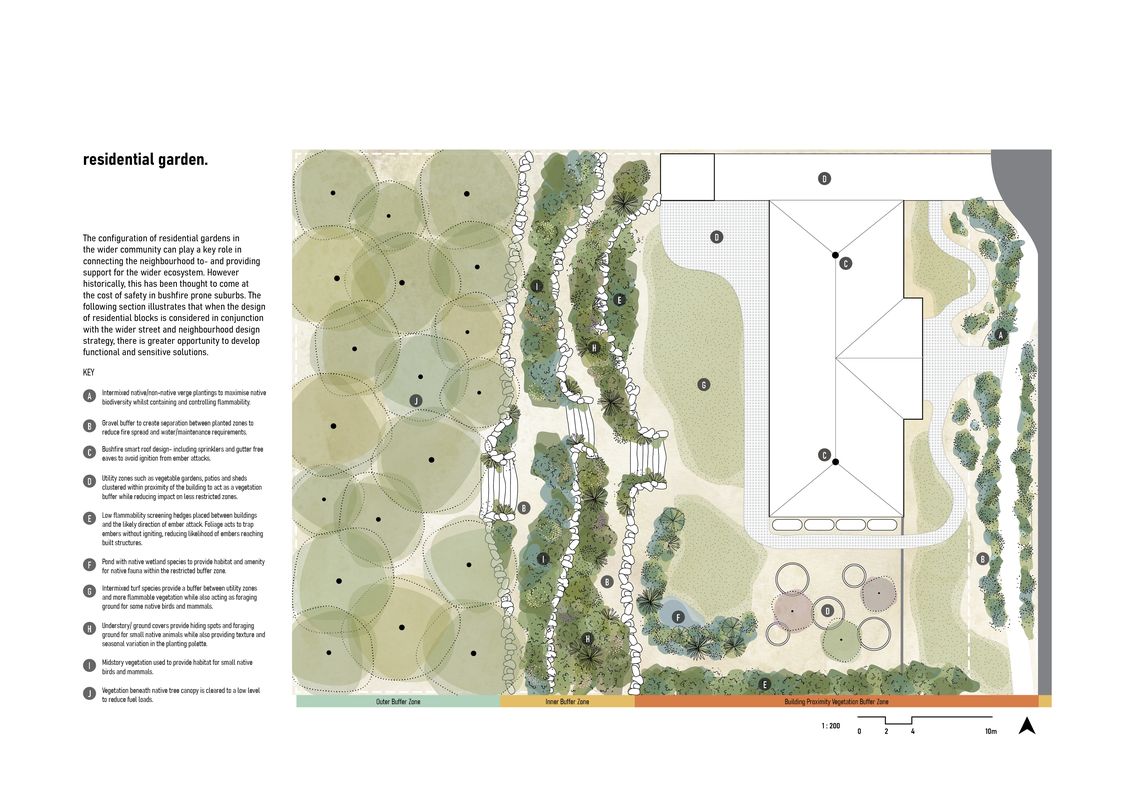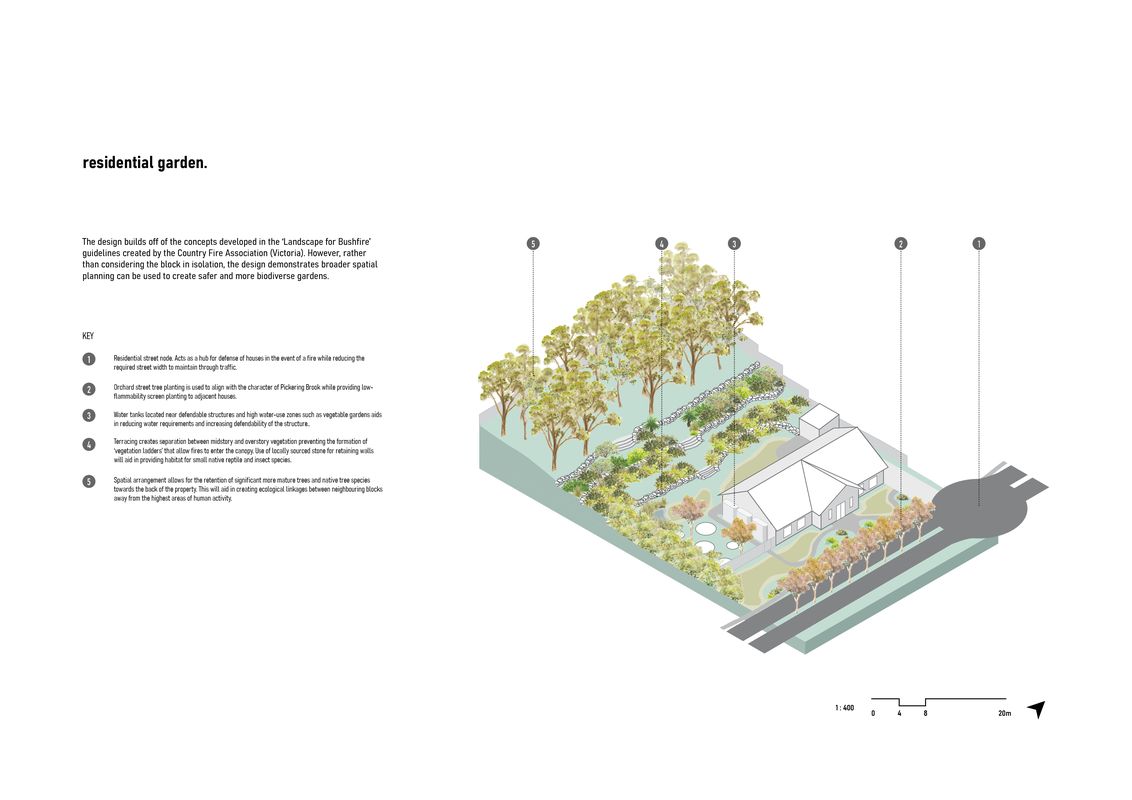Climate change both increases the frequency of intense bushfires and reduces ecosystem resilience. As the intersection between bushland and development continues to expand in peri-urban fringe settings, communities and ecosystems are becoming increasingly exposed to the risk of bushfire. In response, local governments and other responsible agencies have developed bushfire risk mitigation strategies – however these strategies often function in direct conflict with strategies aimed at conserving biodiversity and the structure of ecosystems.
Fire and Place explores these conflicting themes, using landscape architecture design thinking to work towards a balanced approach to development in fire-prone landscapes. In the first part of the project I analyzed case studies conducted in Mediterranean climatic zones and evaluated specific design interventions used in highly-fire-prone peri-urban landscapes across the globe. In the second part of the project, I applied these strategies to a south-west Australian context. Focusing on a parcel of degraded agricultural land in the Perth Hills that has been put forward for development by the City of Kalamunda, the project explores design solutions that incorporate holistic, multi-scale interventions that mitigate bushfire risk without compromising the conservation of local biodiversity.
I began the project by considering the history and use of fire in the landscape. Using QGIS (Geographic Information Systems software), I analyzed the broadscale environmental systems that contribute to the rich ecology of the site and conducted multi-variable analyses to determine the risk of fire across the landscape. The design framework takes a holistic approach to balancing ecological sensitivity and bushfire safety by considering solutions on multiple scales. The first scale, the neighbourhood scale, focuses on developing broader strategies. At this level, there is an emphasis on connecting the site to broad environmental systems present in the landscape, as well as establishing a community-wide bushfire response strategy that is embedded in the town layout. The second scale, the streetscape scale, uses spatial planning strategies to reduce the impact of bushfire development regulations on the surrounding vegetation by maximising the use of space within highly restricted buffer zones. Lastly, the framework discusses bushfire mitigation and habitat enhancement strategies for the residential garden, highlighting what can be achieved on an individual scale to reduce the impact of bushfire development regulations on local ecosystems and native biodiversity.



















